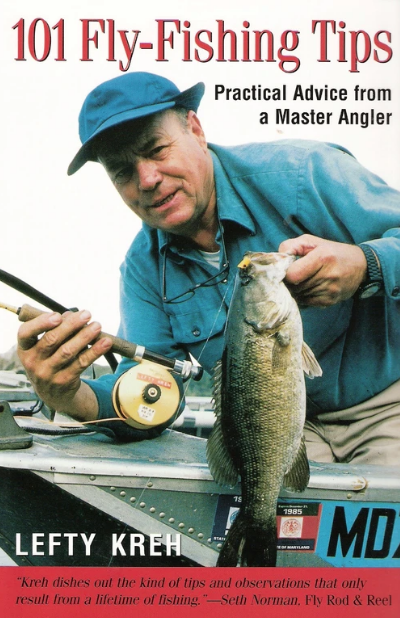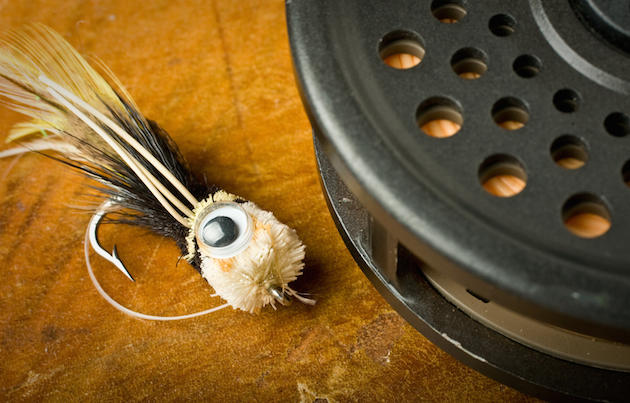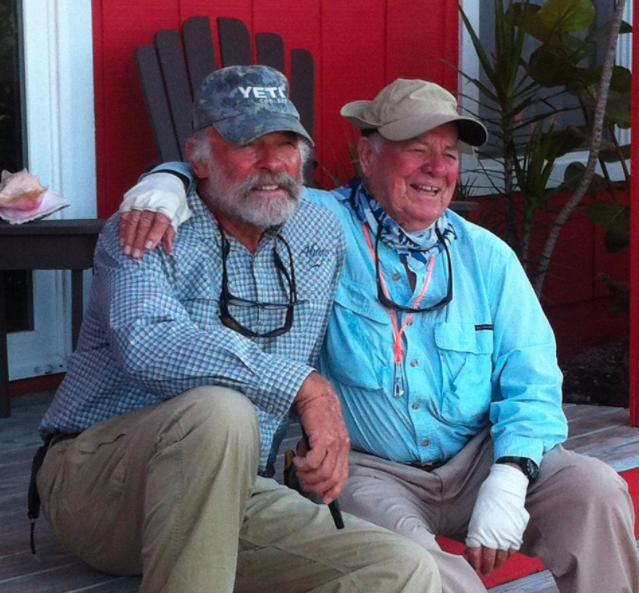Fly fishing brings many life lessons and joys far beyond catching fish, and the sport can even be humbling in unexpected ways.
Plenty of fly anglers cut their teeth casting poppers to redbreasts and bluegills—few, however, do so with an 8-weight. Count me among the few.
The heavy rod made casting poppers pretty easy, but casting a fly didn’t come readily to me. The whole learning-to-cast process likely discourages a lot of folks from taking up fly fishing, and giving up crossed my mind more than once. I kept trying though, and in the process found fly fishing brings joys beyond catching fish. Similarly, fly fishing can be humbling in unexpected ways.
Fly fishing has humbled me many times. I’ve seen it humble my friends, too.
Years ago I worked with a fellow name CJ. He and I picked at each other a good bit, and he usually got the best of me. Well, he approached me at work one day and said, “I think you’d enjoy fly fishing.”
“I’m not sure I’m fly-angling timber,” I replied.
“Why do you say that?”
I told him some version of the following story:
My first brush with fly fishing occurred in early September 1995. Near ground zero of A River Runs Through It, I walked into a fly shop in Missoula, Montana, about 10 minutes before closing time. The guys behind the counter completely ignored me. No. Actually, they dismissed me, even though I looked similar to them—white, 20-something, unshaven and unshorn, sloppily dressed.
“He’s a tourist. Looking for a hat or T-shirt. He’s in here only because of the movie,” I heard them whisper.
They pegged me perfectly, but their lack of common courtesy chafed my hide. Decency to your fellow man above all else, I say. They lived up to every preconceived notion I had of fly fishermen. I now know the fly fishing world is full of sweet and fine people, but those boys needed humbling—and an improved work ethic.
CJ laughed. “That would happen to you.”
Undeterred, he showed up the next day with a fly rod (a 3-piece 8-weight with a crook in the tip top), a reel and some poppers. A few days later we went to a slow-moving creek that eventually runs into the Savannah River.
He razzed me from the first cast. The fly on the end of my line barely got wet and spent more time tangled in the bushes behind me, the limbs above or the line itself. When I managed to hit the water, the casts fell short of the intended target. The more frustrated I grew, the more fun he had. He caught mostly small redbreasts but in abundance.
As dark drew near, I hung up in a limb above my reach. I pulled on it, trying to bring it to hand, but the line snapped just before my patience did. I took the rod apart.
“You might be right, Lumpkin.”
“What’s that?”
“Maybe in fact you aren’t fly-fishing timber.”
We moved toward the takeout. CJ fished and I skipped rocks. He caught another bream about the time I reached down to grab a choice rock—flat, roundish, and with heft. Then my eyes fell on something wonderful—a beautiful arrowhead, nearly four inches long, caramel color with translucence around the tip.
“Holy cow!” I shouted.
“What?”
“Look at this!” I held the point two inches from his nose. The mirth drained from his face, and a humble countenance fell over him. That may be the one time I got something over on CJ.

A size 4 popper and a dream-size arrowhead—the bad and good of the author’s early fly-fishing attempts.
Nearly 20 years later—with a variety of salt- and freshwater fish to my fly rod credit—I waded into the Congaree River near downtown Columbia, South Carolina. A guy from Barron’s, a sporting goods store that has served the city for years, had told me stripers run the river in spring and gather below the Gervais Street bridge.
He told me true, and I felt pretty confident when I stepped into the cool current. I knew I had decent gear—not the very high-end but not the low-end either. With rod, reel, line and wading shoes, I had about $1,100 worth of fly fishing equipment. I just needed a striper so I could feel like a hotshot on a river I’d never fished before.
Half a dozen other fly anglers, however, had staked out spots below the bridge, and I didn’t see room for me. I waded their periphery but moved upstream of the bridge and cast Clouser Minnows into deep pools and below the bridge stanchions. Nothing. I tied on a popper to see if I could turn a bass of some sort. Nothing. After floundering a couple hours, I heard a guttural and urgent shout from the bridge, “Heeeeyyyy!!!”
With cars constantly on the bridge, I dismissed the shout as urban noise. Then I heard it again. “Heeeeyyyy!!!”
Turning, I looked up to see a young black guy, certainly younger than 15, with his arms outlined by nothing but blue sky and raised in victory similar to Rocky on the steps of the Philadelphia Museum of Art. In one hand, he held a fishing rod that appeared to be of hardware-store origin. In the other, a striped bass that must have been 30 inches long.
Like all anglers, he had a story to tell. I felt humbled that he shared it with me. I envied his fish but don’t believe a fly rod would have added one ounce of joy to his catch. I gave him a thumbs up, figured my evening could get no better, and headed for shore.
Cover image: Thinkstock
 Lefty Kreh is one of the most experienced, well-prepared and thoughtful anglers in the world. In this book he shares this wealth of experience with a variety of commonsense solutions to the problems that anglers face. Including: how to pacify a fish, which hook-sharpening tools to use, when and how to take a rod apart when it’s stuck, what to do when a fish runs under your boat, how to dry waders and find leaks and much more. Shop Now
Lefty Kreh is one of the most experienced, well-prepared and thoughtful anglers in the world. In this book he shares this wealth of experience with a variety of commonsense solutions to the problems that anglers face. Including: how to pacify a fish, which hook-sharpening tools to use, when and how to take a rod apart when it’s stuck, what to do when a fish runs under your boat, how to dry waders and find leaks and much more. Shop Now




